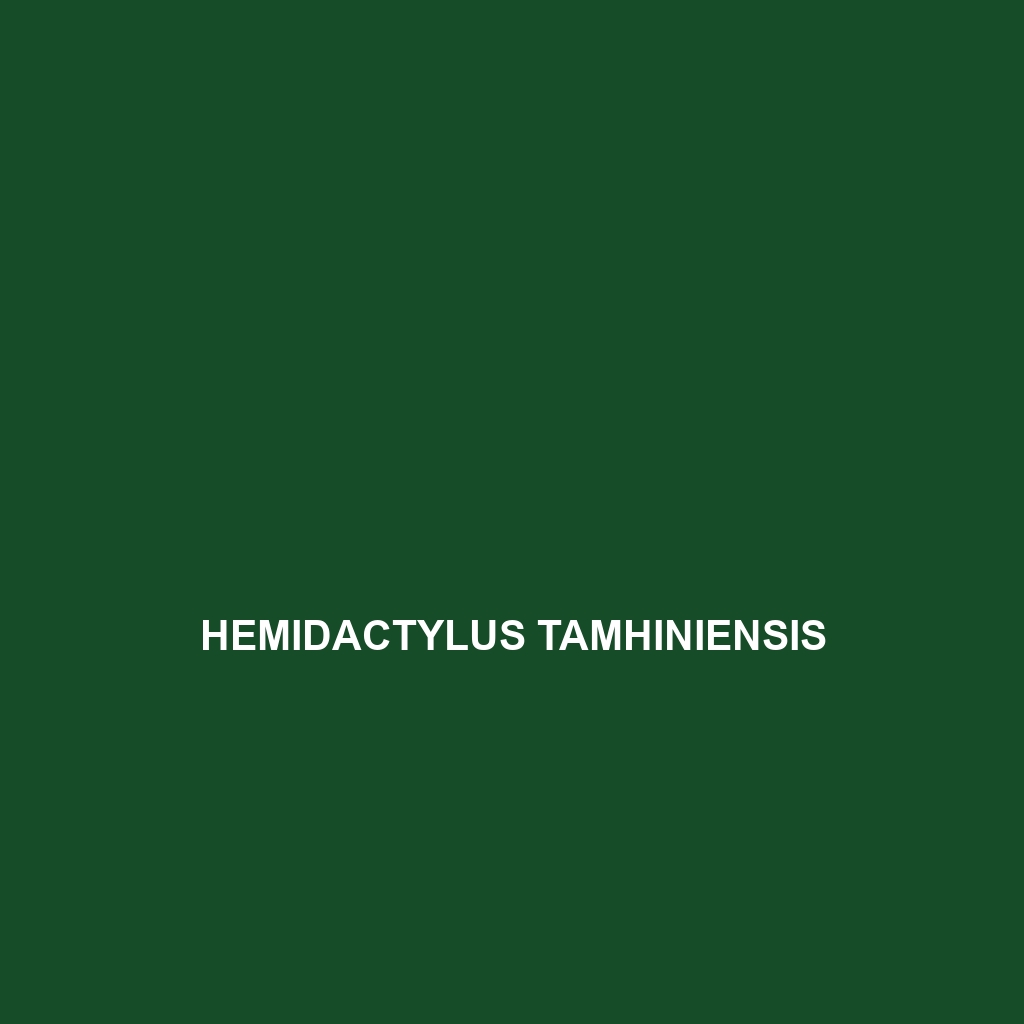Common Name
Hemidactylus tamhiniensis
Scientific Name
Hemidactylus tamhiniensis
Habitat
Hemidactylus tamhiniensis, commonly known as the Tamhini gecko, is primarily found in the lush and diverse ecosystems of the Tamhini Ghats in India. This area is characterized by a combination of tropical rainforests and temperate forests, providing a rich and humid environment that is favorable for these reptiles. The climate is typically monsoonal, featuring heavy rainfall during the monsoon season, which significantly contributes to the biodiversity of the region. Conditions such as ample vegetation and varied microhabitats, including rocky surfaces, tree bark, and leaf litter, create ideal living conditions for the Tamhini gecko.
Physical Characteristics
The Hemidactylus tamhiniensis exhibits a range of physical characteristics that make it stand out among other gecko species. Adults typically measure between 7 to 10 cm in length, with a slender body shape and a long tail that can be used for balance and stability. The skin is covered in small, granular scales that provide a rough texture, allowing the gecko to cling to various surfaces. The coloration is predominantly a mellow brown with darker spots or stripes, which provides excellent camouflage amidst the foliage and rocky environments. Its large, bulging eyes are well-adapted for low light conditions, emphasizing its nocturnal lifestyle.
Behavior
Hemidactylus tamhiniensis is primarily nocturnal, active at night when it forages for food and engages in social interactions. During the daytime, these geckos often find shelter in crevices or under leaves to avoid predation. They exhibit territorial behaviors, particularly males, who will display aggressive postures and vocalizations to establish dominance over their area. Mating rituals typically involve elaborate displays, with males performing head-bobbing and pushing, especially during the breeding season, which usually coincides with the onset of the monsoon rains.
Diet
The diet of Hemidactylus tamhiniensis primarily consists of small insects, classifying them as insectivores. Their diet includes a variety of arthropods, such as crickets, beetles, and moths, which they hunt with quick, precise movements. These geckos utilize their keen eyesight to detect movement in low light and capture prey with their fast reflexes. Interestingly, during times of scarcity, they may exhibit opportunistic feeding behaviors, consuming small fruits or plant matter, thus showcasing a degree of omnivorous dietary flexibility.
Reproduction
The reproductive cycle of Hemidactylus tamhiniensis is notably influenced by environmental factors, particularly the rainy season. Mating typically occurs during the monsoon months, with females laying two eggs per clutch in hidden locations like under rocks or in leaf litter shortly after mating. The incubation period lasts approximately 30 to 45 days, where the eggs develop in the moist environment. Upon hatching, the juveniles are independent and exhibit similar behaviors and dietary preferences as adults. Parental care is minimal, with both parents leaving the eggs after laying.
Conservation Status
The Hemidactylus tamhiniensis is currently classified as a species of least concern according to the IUCN Red List. However, habitat destruction due to deforestation and development poses potential threats to its population. Conservation efforts are essential to preserve the unique biodiversity of the Tamhini Ghats, including promoting sustainable land use practices and increasing awareness about the ecological importance of the region’s fauna.
Interesting Facts
One intriguing aspect of Hemidactylus tamhiniensis is its extraordinary ability to adapt to various microhabitats within its range. Researchers have observed that these geckos can change their color slightly to blend in more effectively with their surroundings, a behavior that enhances their camouflage. Additionally, like many geckos, they can lose their tail when threatened by predators, a mechanism that provides them a chance to escape.
Role in Ecosystem
Hemidactylus tamhiniensis plays a crucial role in its ecosystem as both predator and prey. As insectivores, they help control pest populations, thus contributing to ecological balance. Moreover, they serve as a food source for larger predators, including birds and small mammals. The Tamhini gecko’s existence underscores the intricate web of life within the rainforests, emphasizing the importance of each species in maintaining the health of their respective habitats.
